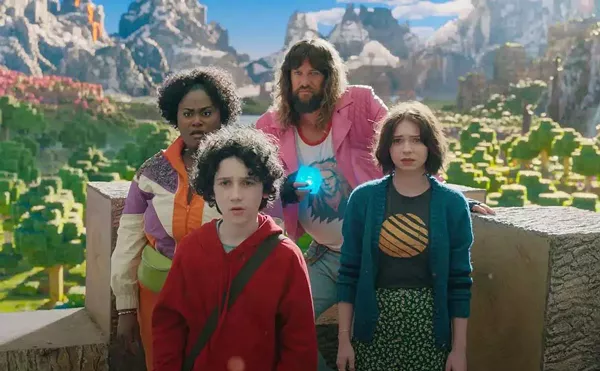How many plagues does that make now? I’ve lost count: AIDS, E. coli contamination, Listeria, mad cow disease, foot-and-mouth disease, black mold, West Nile virus, … it’s, like, too much to think about. And that’s probably most folks’ reaction to all this stuff.
Not all of these dangers are new, but as news copy about them piles up at an alarming rate, it’s enough to make you long for simpler times — say, like, 1962?
You’re out with the latest sweetie of your dreams. Not much money but not to worry, there’s always Big Boy. You drive up and scarf down some burgers and shakes, or maybe a chicken sandwich and fries. Somehow you didn’t hear as much about food poisoning back then. And the beef and chicken industries hadn’t started stuffing their animals with antibiotics yet, so 2001’s drug-resistant bacteria strains weren’t threatening to turn fast food into an unhappy meal either — kind of a culinary crapshoot, if you get my drift.
Afterward you could cruise on over to Belle Isle, paradise on a sultry night, and hope to get some serious lovin’ in before the cops came around with their flashlights. Let’s say you were just getting to the point of no return, heavy breathing and all, when she whispered those reassuring words in your ear: “It’s OK, I’m on the pill” — this in those innocently horny days before impermeable raincoats and other deep-sea-diving gear.
And then there were the bugs flying in and out the rolled-down windows. One of you might have had a bare butt shining in the moonlight, a landing strip for a mosquito or two. But if you got bit, all it did was itch — no aches, fever, coma or encephalitis. And if, while skinny-dipping past midnight, you swallowed a few mouthfuls of Metropolitan Beach water, you didn’t come down with the mother of all shit-fits by morning.
And what about those burgers, after all? The international beef industry hadn’t started “rendering” cows yet (i.e. adding cow parts to the feed they gave to their herds), thus potentially exposing the animals (and, duh, us) to BSE (bovine spongiform encephalitis, better known as mad cow disease). Mercury contamination was just starting to show up on the radar screen, and the asbestos insulation in our buildings was still thought of as a safety precaution, a good thing.
Come to think of it, though, TB and polio were recent enough nightmares in the late-’50s and early-’60s to give anybody a chill; the Bomb regularly haunted baby boomer dreams; and a whole lot of political assassinations were just around the corner. So maybe there have never been any “good old days.” Ask the Irish about the potato famine; ask your grandparents about the diseases of the Great Depression (rickets, scurvy, anemia, etc.).
The growing number of diabetes cases in the United States has been directly attributed to junk food and lack of exercise. You can hardly eat Great Lakes fish anymore, because of the mercury levels. How many otherwise intelligent kids do you know who are strung out on nicotine or on OxyContin?
Maybe, instead of wishing for what never was, we might remember (and make concerted political use of) that maxim of the ecology movement: “Pollution is somebody’s profit.” E. coli, Listeria or mercury levels are the other side of the karma coin from corporate profit margins and a “booming” economy. West Nile virus probably came to North America in a shipment of free-trade tires. And some public officials are seriously thinking of spraying the varmints (despite the tragic, counterproductive consequences of this practice over the past 50 years). Why can’t we think of any other approach? Could it be in somebody’s $$$ interest?
George Tysh is Metro Times arts editor. E-mail him at gtysh@metrotimes.com





